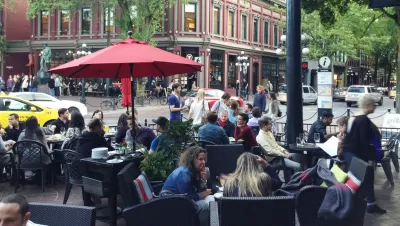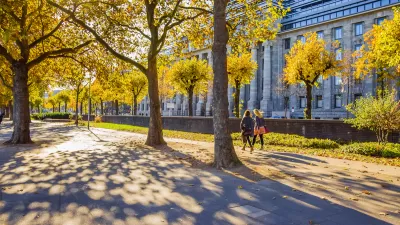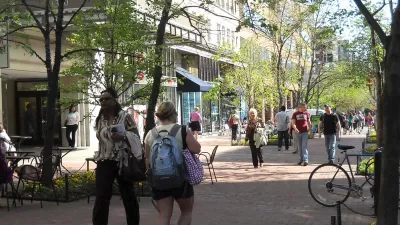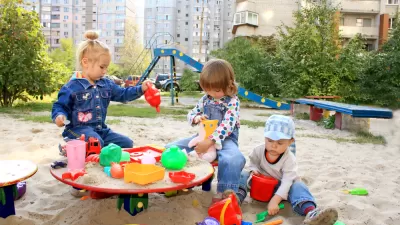As the pandemic emphasized, the way we design our cities can have lasting impacts on residents' health and wellness.

In Governing, Alan Ehrenhalt highlights the link between urban design and public health, pointing to arguments by public health experts that the way we design cities and buildings has a powerful impact on the health of individuals and populations.
A fair amount of public health by design has to do with re-engineering temperature, especially making the environment cooler in abnormally hot times and places. Reducing the amount of blacktop pavement is one way to do this; too much blacktop creates a heat trap. Protecting tree cover is one more; ample tree cover has been shown to reduce the prevalence of asthma in large cities.
As another example, walkability affects people's ability to get regular exercise by walking to work, school, or local amenities. Meanwhile, polluted air can counteract the positive effects of good sidewalks and crosswalks by contributing to the prevalence of lung and respiratory diseases.
Ehrenhalt provides other examples of design choices that impact public health, including stairways, ventilation, and open-air plazas. But while he supports the concept, Ehrenhalt cautions that "Adding health impact studies, in addition to forcing predictions that are difficult to make in the long run, would add significantly to the red-tape problem." Nevertheless, the public health lessons of the past century can inform design decisions that create healthier cities.
FULL STORY: Is the Design of Our Cities Making Us Sick?

Planetizen Federal Action Tracker
A weekly monitor of how Trump’s orders and actions are impacting planners and planning in America.

Restaurant Patios Were a Pandemic Win — Why Were They so Hard to Keep?
Social distancing requirements and changes in travel patterns prompted cities to pilot new uses for street and sidewalk space. Then it got complicated.

Map: Where Senate Republicans Want to Sell Your Public Lands
For public land advocates, the Senate Republicans’ proposal to sell millions of acres of public land in the West is “the biggest fight of their careers.”

Maui's Vacation Rental Debate Turns Ugly
Verbal attacks, misinformation campaigns and fistfights plague a high-stakes debate to convert thousands of vacation rentals into long-term housing.

San Francisco Suspends Traffic Calming Amidst Record Deaths
Citing “a challenging fiscal landscape,” the city will cease the program on the heels of 42 traffic deaths, including 24 pedestrians.

California Homeless Arrests, Citations Spike After Ruling
An investigation reveals that anti-homeless actions increased up to 500% after Grants Pass v. Johnson — even in cities claiming no policy change.
Urban Design for Planners 1: Software Tools
This six-course series explores essential urban design concepts using open source software and equips planners with the tools they need to participate fully in the urban design process.
Planning for Universal Design
Learn the tools for implementing Universal Design in planning regulations.
Heyer Gruel & Associates PA
JM Goldson LLC
Custer County Colorado
City of Camden Redevelopment Agency
City of Astoria
Transportation Research & Education Center (TREC) at Portland State University
Camden Redevelopment Agency
City of Claremont
Municipality of Princeton (NJ)





























